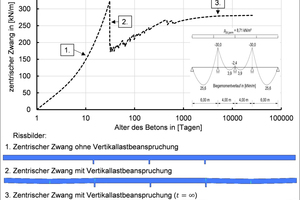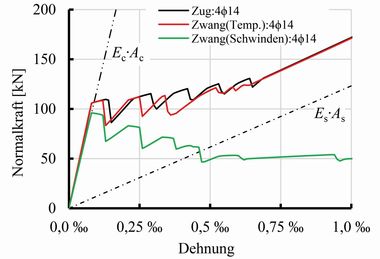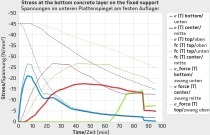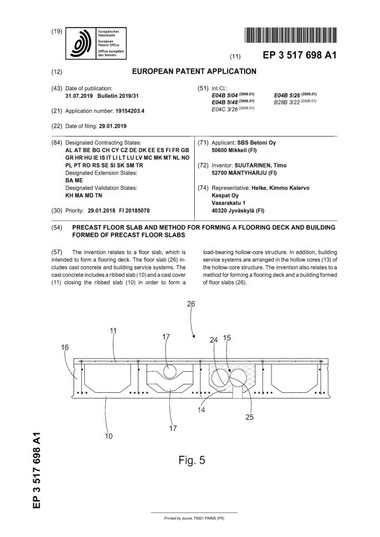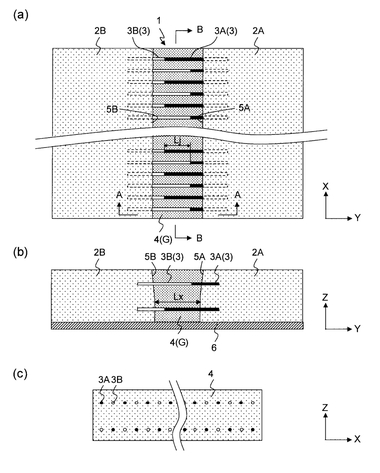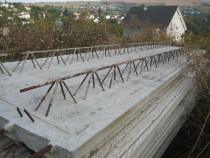Centric axial strain in uniaxially restrained precast reinforced concrete floor slabs
Any floor slab whose shortening is obstructed by stiffening components, such as building cores or walls, will be subject to strain caused, for instance, by shrinkage. In this scenario, reinforced concrete floor slabs are thus subject to a combined action of service loading and strain forces. The impact of the loading component leads to flexural cracks in certain areas of the slab that, in turn, result in a partial reduction of the strain. Physically nonlinear FEM models currently provide the only option to realistically simulate superimposed service loading and strain forces as well as their interactions.
TU Kaiserslautern and Bochum University of Applied Sciences jointly conducted a research project funded by the Federal Institute for Research on Building, Urban Affairs and Spatial Development (BBSR). Its first phase included a comprehensive program of short-term and fatigue tests of precast floor slabs carried out at TU Kaiserslautern. After completion of these tests, a team of researchers at Bochum University of Applied Sciences performed corresponding computations to replicate the test results and to calibrate the parameters required for non-linear FEM simulations. In the next step, a parametric study involving all relevant parameter combinations was conducted.
The outcomes of the structural component tests and of the parametric study were used to develop verified design tools that permit realistic calculations of the longitudinal strain forces acting on uniaxially restrained precast reinforced concrete floor slabs.

